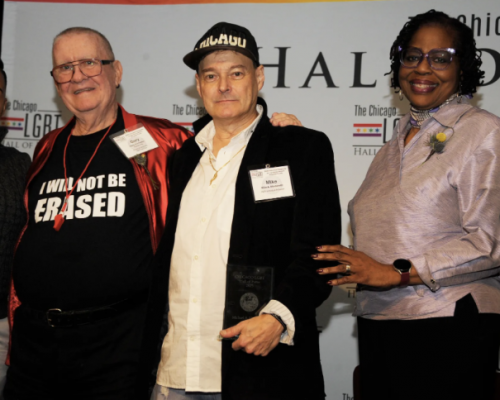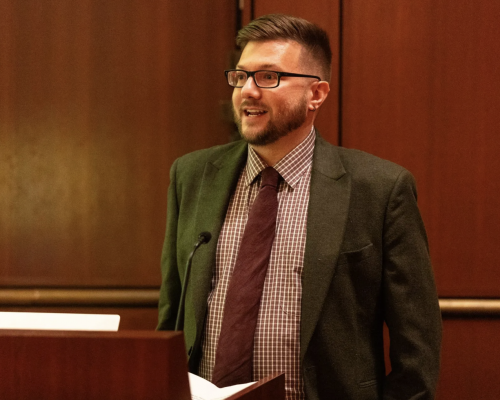by Chuck Colbert
In August, Community Marketing & Insights Inc. (CMI), a gay-owned San Francisco-based consumer-research company, released its 9th annual LGBT community survey, providing useful data for LGBT organizations and gay media publishers, editors, and reporters.
This year’s survey drew responses from more than 15,000 self-identified LGBTs. The large sample size enables a closer look at any number of segments within the LGBT community. It also helps media outlets and others understand “how the LGBT community sometimes responds as one voice, or when demographic differences such as gender, age, and geographic residence are far more important,” according to a press release.
The survey, which took 15-20 minutes to complete, was conducted between April 15 and May 30, 2015. CMI made it accessible through a wide range of venues, including more than 200 LGBT websites, LGBT publications, social media, and the marketing firm’s partner organizations, such as film festivals, community centers and business associations.
During a 35-minute, August 25 webinar, CMI senior research director David Paisley explained that the survey is a “broad-based one that includes purchasing patterns of respondents and their participation and interest in the LGBT community. Because the survey’s respondents interact with LGBT organizations and media, these are the people you want to reach if you are doing an outreach campaign.”
According to the report, “By attracting large numbers of respondents, CMI is able to take a closer look at the many segments within [the] LGBT [community]. Obviously, the purchasing patterns and motivations of a 25-year-old single gay man living in New York City are completely different than those of a lesbian couple in their 60s living in Sedona, Ariz.”
This year’s survey results were categorized under five different headings, including identities, LGBT families, purchase preferences, media consumption, and social and political concerns. During the webinar, Paisley explained highlights and key findings.
Identities
One key finding from survey results in the identities category is that within the larger LGBT community, the terms used to express sexual orientation, gender identity, and cultural identity are changing. This trend is noteworthy among younger respondents and those identifying as women and gender expansive. For example, women are far more likely to say they are bisexual and queer than men. At the same time, gender expansive includes respondents who say they are transgender, trans men, trans women, intersex, non-binary, gender queer, and/or gender fluid. Respondents who say they are gender expansive are likely to define themselves with multiple terms.
“This information is not so important if you are marketing to Baby Boomers (born between 1946 and 1964), but it is important if you are marketing to Millennials (born between 1981 and 2001) and particularly to females because the definitions within LGBT groups, especially with the younger group, are changing rapidly,” said Paisley.
Another key finding is that “LGBT” remains the most popular term to describe the community among women and men, especially among bisexual and transgender respondents.
LGBT Families
In terms of where we live, gender makes a big difference, said Paisley, with “gay and bisexual men far more likely to live in urban America than lesbian and bisexual women,” according to survey results.
This information is important to know, he explained. “If your [advertising] campaign is targeted at the urban core, you are far more likely to reach men than women. If you have a more national approach, you will begin to reach men and women more equally.”
For Millennial men and women, a move to the big city is “less about being safe and moving to a friendly LGBT place,” said Paisley. It’s about two other things: “dating opportunities” and “economic opportunities.”
In other findings, gay and bisexual men are more likely than lesbian and bisexual women to define themselves as single, with lesbians and bisexual women far more likely to be married. For example, only nine percent of Millennial men define themselves as married compared to 22 percent of Millennial women.
For the most part, men and women report equal satisfaction with their current same-sex partner, with more than 90 percent of same-sex couples reporting satisfaction with their primary relationship.
And perhaps most interesting, an LGBT Baby Boom may be on the way, with 51 percent of Millennial men and 55 percent of Millennial women saying they desire to have children in the future. Currently, Generation X women (born between 1965 and 1980) are far more likely (31 percent) to be parents of a child under the age of 18 than Generation X men (six percent). “That’s a big difference,” said Paisley. But at least today, “The parent market is a women-driven market,” he said.
Purchase Preferences
CMI’s survey found overall economic confidence to be in the “positive to neutral area,” compared to years ago during the recession, Paisley said. In fact, the survey found that Baby Boomer LGBTs are more economically confident than Millennial LGBTs. Actually, Baby Boomer LGBTs are 10 percent more economically confident than Millennial LGBTs, “who are not benefitting from this economy as much as the Baby Boomers” who “are really rich,” he said. Millennials, he said, have unique challenges in finding jobs and paying off student loans.
A new set of questions in this year’s survey attempted to get at consumer/purchasing personality. “LGBT men and women are equally likely to describe themselves as online and mobile shoppers, as well as researchers/planner purchases,” according to CMI’s findings. And yet, “gay and bisexual men are far more likely than lesbians and bisexual women to describe themselves as impulsive shoppers, luxury shoppers, and brand name shoppers.”
Oddly enough, CMI also found that “gay and bisexual men report slightly higher 30-day purchasing rates on everyday consumer products compared to lesbians.” A few of the products include toothpaste and laundry detergent. Paisley offered one explanation for the difference. “The men are not buying such products more often,” he said. “They are just buying it less smart.”
Altogether, the results are meant to show that the male market is just as viable as the women’s market on something like toothpaste or laundry detergent, he said.
During the webinar, Paisley pointed to the full, 42-page survey, available online at http://www.communitymarketinginc.com/cmis-9th-annual-lgbt-community-survey-report/), for more detailed information about purchasing preference, which he said CMI has been tracking over time.
Media Consumption
In this category, Paisley pointed to social media and the universality of Facebook usage across the demographic range. “LGBTs were the first to market with Facebook,” he said. “We’ve really been involved with it for a long time.”
But with “other social media, it becomes much more generational,” Paisley added. Instagram, for example, “is far more popular with Millennials than Baby Boomers.”
Usage of dating apps, he said, is also interesting. “Gay men are very strong on the dating apps, like Grindr and Scruff, while the women don’t really have an equivalent that has taken off within the lesbian community.”
In other findings, Paisley said, “Millennial gay and bisexual men are largely reached online. They certainly are reading some of the LGBT publications, but it’s smaller numbers than Generation X and Baby Boomers. Nonetheless, the regional publications [and] national magazines are very much read across the board within the LGBT community, but especially with older LGBTs.
“That is always something to keep in mind. With some products, like some financial services, you really ought to be targeting Baby Boomer men. And LGBT publications may be the perfect place to do that. If you are targeting Millennial men, maybe online is better.”
CMI’s survey results also found that attending LGBT Pride events is important, especially for younger LGBTs. Paisley noted that in “the qualitative research we hear that younger LGBTs like to go to Pride because it’s one place where the entire community is together — men, women, transgender community, young and old. Millennials really like that. So the reason they go to Pride is they like to see the full community, of all ethnicities all genders.”
On the women’s side, he said, “It’s largely a mirror image, with a couple differences — a little bit stronger [readership] on LGBT print media. Millennial women are largely reached online, while older LGBTs are reading print publications.
“Attending Pride events is equally strong with the women’s community and men’s community,” said Paisley.
Social and Political Concerns
CMI has tracked these issues for some time. Accordingly, the survey asked about social and political issues of most concern.
“This is one thing where we are very different from the general population,” said Paisley. “If you ask theses things of the general population, economic issues, such as high taxes, unemployment, and government regulation come to the front.”
But for “our” community, “LGBTQ discrimination and anti-LGBT religious freedom legislation are much, much more important,” he said.
Reactions
Two LGBT community market observers offered their perspectives on the survey results.
“I find this year’s research is timely by slicing generations of LGBT consumers and households,” said Bob Witeck, president and founder of Witeck Communications. “It’s especially important for us to understand Millennial attitudes and insights, since by far they are establishing the market’s next significant trends.”
Based in Washington, D.C., Witeck Communications specializes in strategic public relations and marketing communications for corporate and non-profit clients. Witeck Communications has no fiduciary responsibility or connection to CMI.
“Community Marketing is helping to promote the gay and lesbian market,” said Todd Evans, president and chief executive officer of Rivendell Media, which publishes Press Pass Q. “Right now, the company is the only one doing that.”
TOP STORY
Volume 17
Issue 7







Comments
? Was this a US-only survey? North American? What?